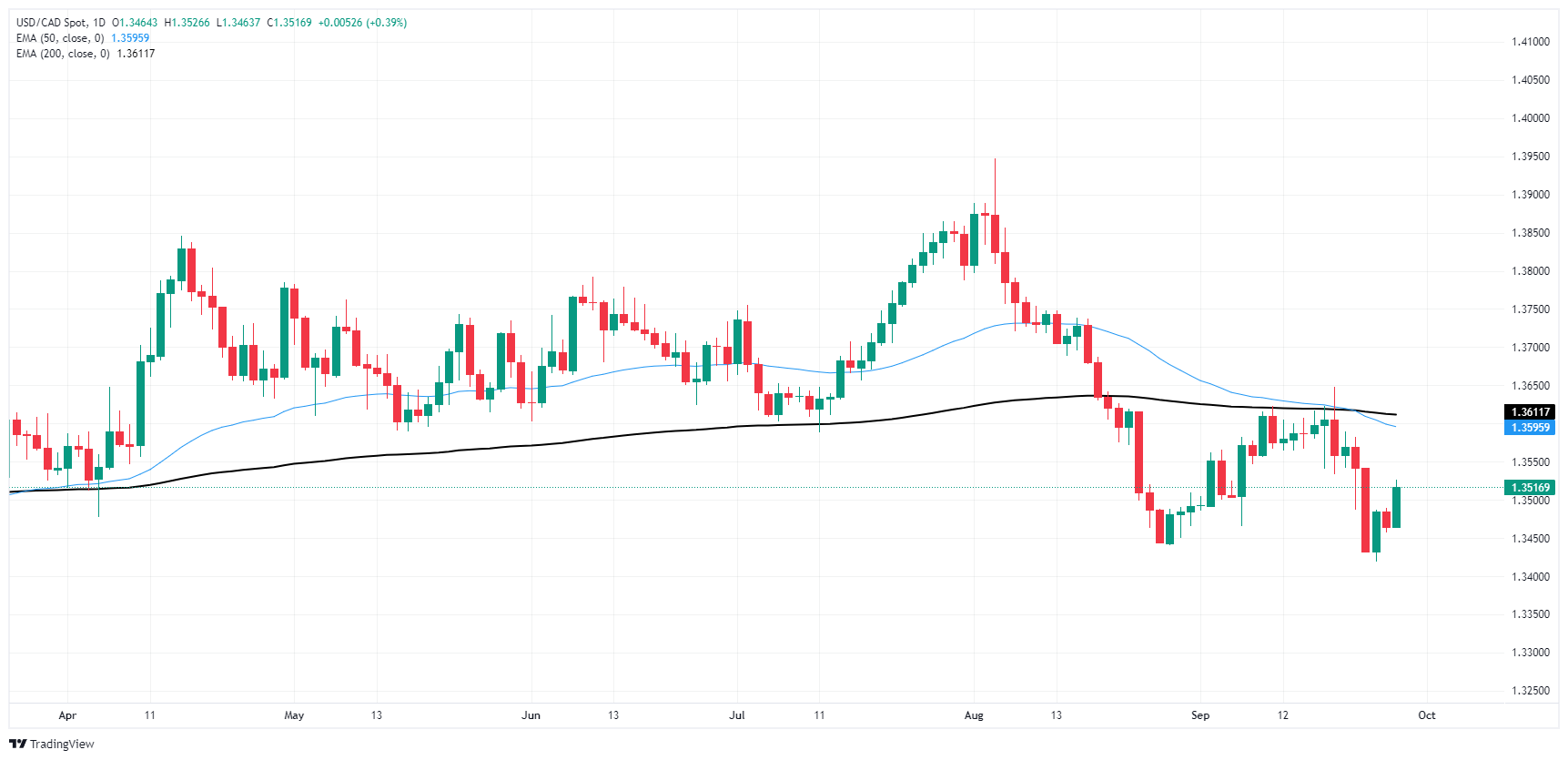Canadian Dollar recedes on Friday despite uptick in GDP
- The Canadian Dollar fell across the board on Friday.
- Canada saw a higher-then-expected GDP print from July.
- US PCE inflation data dominated Friday’s headlines.
The Canadian Dollar (CAD) fell back against all of its major currency peers on Friday, shedding nearly one-third of one percent against the Greenback. Markets shrugged off an upbeat print in Canadian Gross Domestic Product (GDP) growth figures, and cooling US Personal Consumption Expenditure Price Index (PCE) inflation is keeping market hopes for a follow-up rate cut on the high end.
Canada saw GDP rise more than expected in July, but a lack of other meaningful data saw CAD flows brush off the long-dated growth figure in favour of watching the US PCE inflation print. Headline PCE inflation cooled even faster than expected in August, keeping risk appetite on-balance.
Daily digest market movers
- Canadian MoM GDP bounced to 0.2% MoM in July, over and above the expected 0.1% and grinding up from the previous month’s 0.0%.
- Despite the upbeat Canadian GDP growth figure, CAD flows remained firmly lower on Friday.
- Headline US PCE inflation cooled faster than expected in August, easing to 2.2% YoY versus the forecast 2.3% and well back from the previous print of 2.5%.
- Despite the top being taken off the top of headline PCE inflation, core PCE inflation ticked higher to 2.7% YoY compared to the previous 2.6%.
- Rate market bets of another double rate cut for 50 bps have risen to 55% according to the CME’s FedWatch Tool.
Canadian Dollar price forecast
The Canadian Dollar (CAD0 is caught in the middle of lazy congestion against the Greenback, with the USD/CAD pair trading well within recent highs and lows. The pair is caught in sideways churn below the 200-day Exponential Moving Average (EMA).
USD/CAD has recovered from near-term lows priced in just south of the 1.3450 level, but US Dollar bulls are struggling to put stakes in and make a meaningful bullish drive despite clearing the 1.3500 handle on Friday.
USD/CAD daily chart
Canadian Dollar FAQs
The key factors driving the Canadian Dollar (CAD) are the level of interest rates set by the Bank of Canada (BoC), the price of Oil, Canada’s largest export, the health of its economy, inflation and the Trade Balance, which is the difference between the value of Canada’s exports versus its imports. Other factors include market sentiment – whether investors are taking on more risky assets (risk-on) or seeking safe-havens (risk-off) – with risk-on being CAD-positive. As its largest trading partner, the health of the US economy is also a key factor influencing the Canadian Dollar.
The Bank of Canada (BoC) has a significant influence on the Canadian Dollar by setting the level of interest rates that banks can lend to one another. This influences the level of interest rates for everyone. The main goal of the BoC is to maintain inflation at 1-3% by adjusting interest rates up or down. Relatively higher interest rates tend to be positive for the CAD. The Bank of Canada can also use quantitative easing and tightening to influence credit conditions, with the former CAD-negative and the latter CAD-positive.
The price of Oil is a key factor impacting the value of the Canadian Dollar. Petroleum is Canada’s biggest export, so Oil price tends to have an immediate impact on the CAD value. Generally, if Oil price rises CAD also goes up, as aggregate demand for the currency increases. The opposite is the case if the price of Oil falls. Higher Oil prices also tend to result in a greater likelihood of a positive Trade Balance, which is also supportive of the CAD.
While inflation had always traditionally been thought of as a negative factor for a currency since it lowers the value of money, the opposite has actually been the case in modern times with the relaxation of cross-border capital controls. Higher inflation tends to lead central banks to put up interest rates which attracts more capital inflows from global investors seeking a lucrative place to keep their money. This increases demand for the local currency, which in Canada’s case is the Canadian Dollar.
Macroeconomic data releases gauge the health of the economy and can have an impact on the Canadian Dollar. Indicators such as GDP, Manufacturing and Services PMIs, employment, and consumer sentiment surveys can all influence the direction of the CAD. A strong economy is good for the Canadian Dollar. Not only does it attract more foreign investment but it may encourage the Bank of Canada to put up interest rates, leading to a stronger currency. If economic data is weak, however, the CAD is likely to fall.

